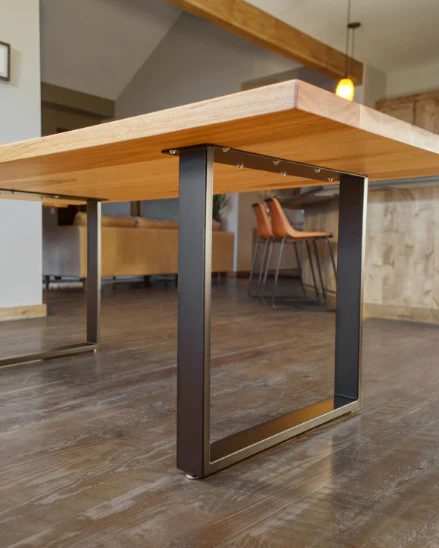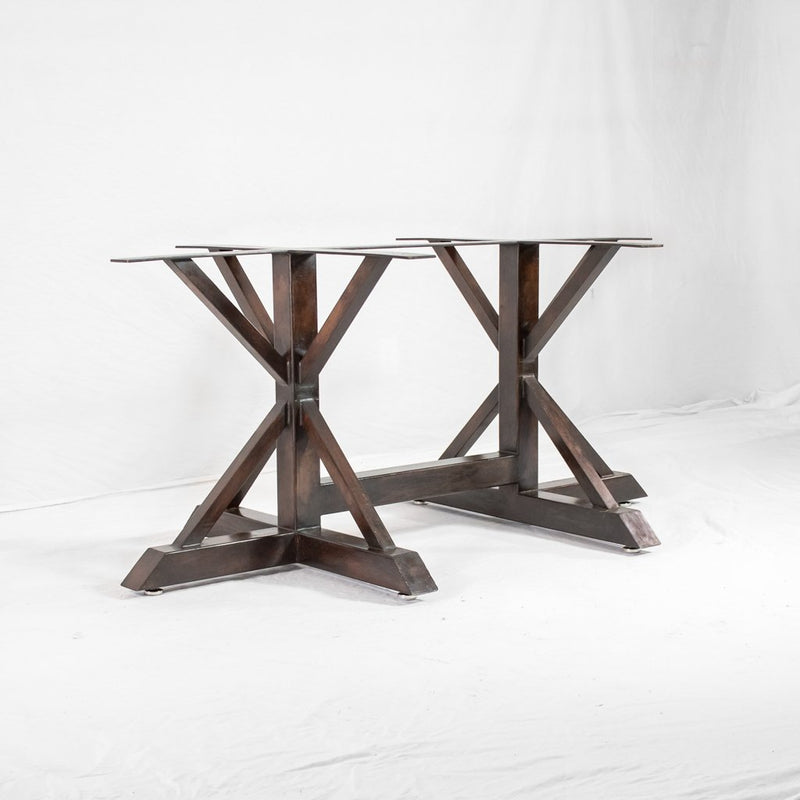Tips for Installing Dining Room Table Legs for a Modern Look
Wiki Article
From Conventional to Modern: Locate the Ideal Dining-room Table Legs for Your Style
While timeless styles such as cabriole and transformed legs evoke a feeling of classic elegance, contemporary styles like barrette and geometric alternatives present an opportunity for striking visual interest. As you take into consideration these components, the concern remains: exactly how can you flawlessly incorporate these diverse leg styles to develop an unified dining experience?Recognizing Table Leg Styles
The variety of dining-room table leg designs can significantly affect both the looks and capability of the space. Each leg style contributes unique aesthetic aspects and sensible functions, providing to varied design preferences and use demands. Recognizing these styles is vital for picking the best table that lines up with your general interior decoration vision.As an example, tapered legs supply a tidy, timeless appearance that can boost a room's elegance, while pedestal bases offer security and maximize legroom, making them suitable for smaller spaces. Barrette legs, a trademark of mid-century contemporary layout, introduce an industrial panache, permitting an airy, open feeling. Trestle legs stimulate rustic charm, offering robust support and a feeling of timelessness.
In addition, the option of products plays a substantial duty. Wooden legs can bring warmth and structure, whereas steel options typically convey a sleek, modern vibe. Ultimately, recognizing table leg designs is important for creating a cohesive eating area that reflects personal design while ensuring usefulness and comfort. By thoughtfully considering these components, you can enhance both the aesthetic and useful charm of your eating space.
Typical Table Leg Options
When picking eating room table legs, standard choices usually embody classic style and workmanship. These layouts show a rich heritage and a commitment to high quality, making them ideal for those who appreciate traditional looks.One of the most iconic traditional leg designs is the cabriole leg, identified by its stylish rounded shape. This design usually features attractive makings and is most typically located in Queen Anne and Chippendale furnishings. Another preferred choice is the turned leg, which boasts a collection of smooth, rounded shapes that give a classic appearance while preserving security.
Moreover, the straight leg, while simple, supplies a basic and sturdy framework that can mix effortlessly with a range of tabletop designs. For those drawn to ornate describing, claw-and-ball feet legs stimulate a feeling of magnificence and can serve as a stunning centerpiece in any kind of eating area.
Last but not least, pedestal bases, although not purely legs, supply an alternate typical choice that permits for ample legroom and can be perfectly carved. Each of these standard leg designs adds to the overall ambiance of a dining room, marrying function with visual charm.

Modern Table Leg Designs
Modern table leg styles offer a varied array of styles that stress tidy lines and innovative materials. These styles usually focus on performance while acting as striking centerpieces within a dining room. Minimal aesthetics are prevalent, with legs crafted from products such as steel, glass, and crafted wood, which contribute to a ventilated and modern feel.One preferred layout is the hairpin leg, characterized by its slim, conical structure that supplies security without frustrating the tabletop (dining room table legs). This design is typically located in mid-century modern furniture and can effortlessly match numerous table forms. One more fad is using geometric forms, where legs might tackle angular or asymmetrical forms, including aesthetic interest and a touch of virtuosity

Blending Styles for Special Spaces
Usually, homeowners look for to develop unique dining areas that mirror their individual style by blending numerous layout elements. This approach enables the consolidation of varied aesthetic appeals, resulting in an unified yet unique atmosphere. For example, pairing a rustic wooden table with streamlined, modern-day metal legs can create a distinctive contrast that elevates the room's overall charm.Additionally, incorporating vintage table legs with modern tabletops can stimulate a sense of history while maintaining a modern-day sensibility. Such mixes not only display specific preference but likewise motivate creativity, allowing home owners to curate an area that feels both personal and inviting.
Color plays a vital function in this mixing process; choosing table legs that match or contrast with the existing color system can improve visual passion. For instance, whitewashed legs can soften the boldness of a dark table surface, producing a balanced visual.
Tips for Picking the Right Legs
Choosing the right table legs is my blog necessary for achieving both capability and aesthetic charm in your eating space. Begin by thinking about the total design of your area. Typical settings benefit from legs that feature intricate carvings or turned styles, while modern areas might ask for smooth, minimal designs.Next, evaluate the height and security of the legs. dining room table legs. Standard dining tables range in between 28 to 30 inches in height, so make sure the legs complement this measurement for comfort. Additionally, robust products, such as hardwood or metal, can improve security and longevity
Evaluate the leg form too-- alternatives consist of straight, tapered, or pedestal styles. Straight legs supply a timeless look, while tapered legs can add a touch of style. Pedestal bases offer adequate legroom and are suitable for smaller areas.
Final Thought
In recap, selecting the suitable eating area table legs calls for cautious consideration of both traditional and modern designs. By balancing leg style, elevation, and material with the overall décor, a cohesive and inviting environment can be attained.The selection of dining area table leg styles can dramatically influence both the looks and functionality of the room. Eventually, understanding table leg Get More Info styles is necessary for producing a natural dining location that reflects individual style while making sure functionality and convenience.One of the most famous traditional leg styles is the cabriole leg, defined by its elegant rounded form. Straight legs use a timeless appearance, while conical legs can add a touch of elegance.In summary, picking the optimal dining room table legs calls for careful consideration of both standard and modern-day styles.
Report this wiki page